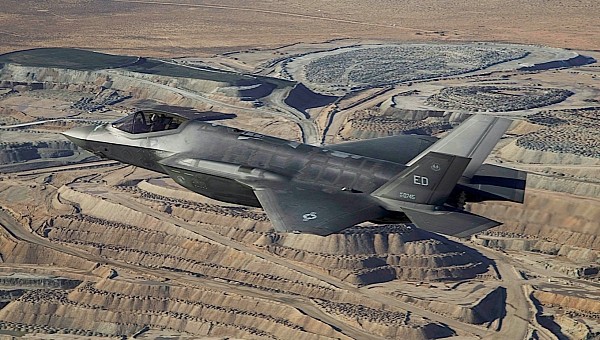Have you ever wondered why decades-old military aircraft are still in operation today, at times performing their duties above and beyond expectations? The answer is simple: constant upgrades.
We experience the same thing, kind of, in the auto industry, where every four-or-so years, car models get refreshed with new generations and, implicitly, new technologies. Unlike what happens in the auto industry though, upgrades to military planes seem a bit more chaotic in terms of timing.
The Lockheed Martin F-35 Lightning II is one of the newer planes around, and one of very few fifth-gen aircraft ever produced. It was first flown in 2006 and entered service with various U.S. military branches at different times and in different configurations: the U.S. Marine Corps got their F-35B in 2015, the U.S. Air Force received the F-35A one year later, and the U.S. Navy started flying the F-35C in 2019.
By all accounts, the plane is not one you’d think is in need of updating, being so young and all, but you’d be wrong. In fact, it has been constantly improved and work on it is unlikely to stop anytime soon, given current global challenges.
There are many ways the military is planning to improve the capabilities of the plane, including by giving it better sensor suites, better electronic warfare features, and equip them with more long-range precision weapons. All of these and more (to a total of 75 upgrades) are part of the Block 4 suite of changes coming to these planes over the following years.
But before the planes start receiving the new hardware, their operators have to make sure they’ll be able to handle it. For that, something the USAF calls “computational horsepower” had to be devised.
Officially called Technology Refresh 3 (TR-3), the suite updates the plane’s core processing power and memory capacity to be able to handle the upcoming software needed to operate Block 4.
We’re only now learning of this, but on January 6, an F-35 Lightning flew out of Edwards Air Force Base in California with TR-3 installed. It was the first flight ever of an F-35 in this configuration.
According to the USAF, the flight lasted for 50 minutes and was performed with a “specially instrumented flight test aircraft” flown by pilot with the 461st Flight Test Squadron. The F-35 flew at heights of 35,000 feet (10 km) and reached speeds just under the speed of sound (767 mph/1,234 kph), heading out over the Mojave Desert.
The mission was the first of what the Air Force calls “an extensive flight test campaign” that will continue throughout the year “to ensure safety and prove warfighting capabilities.” When fully operational, TR-3 and Block 4 should turn the F-35 into an almost unbeatable beast, capable to survive against all odds when faced with air, ground, and cyber threats.
We only hope these planes and the pilots flying them will never get to use this power.
The Lockheed Martin F-35 Lightning II is one of the newer planes around, and one of very few fifth-gen aircraft ever produced. It was first flown in 2006 and entered service with various U.S. military branches at different times and in different configurations: the U.S. Marine Corps got their F-35B in 2015, the U.S. Air Force received the F-35A one year later, and the U.S. Navy started flying the F-35C in 2019.
By all accounts, the plane is not one you’d think is in need of updating, being so young and all, but you’d be wrong. In fact, it has been constantly improved and work on it is unlikely to stop anytime soon, given current global challenges.
There are many ways the military is planning to improve the capabilities of the plane, including by giving it better sensor suites, better electronic warfare features, and equip them with more long-range precision weapons. All of these and more (to a total of 75 upgrades) are part of the Block 4 suite of changes coming to these planes over the following years.
But before the planes start receiving the new hardware, their operators have to make sure they’ll be able to handle it. For that, something the USAF calls “computational horsepower” had to be devised.
Officially called Technology Refresh 3 (TR-3), the suite updates the plane’s core processing power and memory capacity to be able to handle the upcoming software needed to operate Block 4.
We’re only now learning of this, but on January 6, an F-35 Lightning flew out of Edwards Air Force Base in California with TR-3 installed. It was the first flight ever of an F-35 in this configuration.
According to the USAF, the flight lasted for 50 minutes and was performed with a “specially instrumented flight test aircraft” flown by pilot with the 461st Flight Test Squadron. The F-35 flew at heights of 35,000 feet (10 km) and reached speeds just under the speed of sound (767 mph/1,234 kph), heading out over the Mojave Desert.
The mission was the first of what the Air Force calls “an extensive flight test campaign” that will continue throughout the year “to ensure safety and prove warfighting capabilities.” When fully operational, TR-3 and Block 4 should turn the F-35 into an almost unbeatable beast, capable to survive against all odds when faced with air, ground, and cyber threats.
We only hope these planes and the pilots flying them will never get to use this power.
























